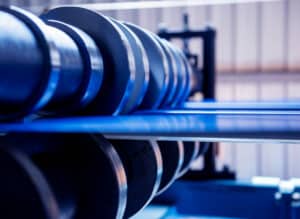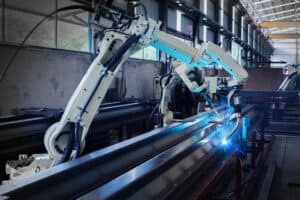Stainless Steel Beam Benefits
Stainless Steel I Beam Benefits
What are the benefits of Stainless Steel I beams
- Corrosion Resistance: The primary advantage of stainless steel is its excellent resistance to corrosion. This makes stainless steel beams suitable for use in environments where exposure to moisture, chemicals, salt water, and weather conditions could lead to corrosion in other materials. The most popular are 304/304Land 316/316L stainless I beam.
- Durability: Stainless steel is known for its high strength and durability. Stainless steel I beams can withstand heavy loads and high levels of stress, making them suitable for structural applications where strength is crucial.
- Low Maintenance: Because of its resistance to corrosion and staining, stainless steel requires minimal maintenance. This can lead to cost savings over time, as there is less need for repairs or replacements compared to other materials that may corrode or degrade.
- Aesthetic Appeal: Stainless steel has a sleek and modern appearance that is often used in architectural and design applications. The aesthetic appeal of stainless steel I beams can be an important factor in applications where visual appearance matters.
- Hygienic Properties: Stainless steel is easy to clean and maintain sanitary conditions. This makes it suitable for applications in industries such as food processing, pharmaceuticals, and healthcare, where hygiene is critical.
- Fire and Heat Resistance: Stainless steel has excellent fire resistance properties. It does not easily warp or deform under high temperatures, making it suitable for applications where fire resistance is important.
- Versatility: Stainless steel I beams are versatile and can be used in a wide range of applications, including construction, manufacturing, infrastructure, and more. They are available in various sizes and shapes to meet different structural requirements.

How are Stainless Steel Roll Formed I beams made?
Roll-formed I-beams, also known as cold-formed stainless I-beams, are manufactured through a process called roll forming. Roll forming is a continuous bending operation where a long strip of metal, usually in coil form, is passed through a series of rollers to gradually shape it into the desired profile. Here’s a general overview of how roll-formed I-beams are made.
- Material Selection:
- The raw material is typically a coil of stainless 304 or 316 stainless. Stainless 304/304L and 316/316L are grades that have suitable properties for structural applications.
- Uncoiling:
- The coil of metal is placed on an uncoiler, and the stainless strip is fed into the roll forming machine.
- Roll Forming:
- Material is fed into the roll forming machine. The machine consists of a series of rollers, each performing a specific bending or forming operation.
- The rollers gradually shape the flat strip into the desired I-beam profile. The rollers are designed to bend the metal incrementally, with each pass contributing to the final shape.
- Cutting:
- After the metal has been formed into the I-beam profile, it is cut to the desired length. In most cases 20’. This is often done using a cutoff press, which can make precise cuts while the material is still in motion.
- Quality Control:
- Throughout the process, quality control measures are implemented to ensure that the finished I-beams meet the required specifications and standards.
Stainless steel structural shape beams, are typically covered by ASTM A276 (Standard Specification for Stainless Steel Bars and Shapes) or ASTM A484 (Standard Specification for General Requirements for Stainless Steel Bars, Billets, and Forgings). These standards provide general requirements for the chemical composition, mechanical properties, dimensions, and tolerances of stainless steel bars and shapes.

Laser Fused Stainless Steel I Beams
Laser fusion welding is produced with full penetration welds up to 1.25” on open shapes (such as angle, beam, and channel). Since the laser fusion process melts the parent material (plate) down to its grain structure it becomes one monolithic piece of steel like you would see in a hot rolled shape or welded. The strength comes from the strength values of the plate. The profile itself takes on those values when produced.
- Material Standards:
- The base material, which is stainless steel, would still need to comply with relevant ASTM standards. ASTM A276 ASTM A484, and ASTM 1069 mentioned earlier, are common standards for stainless steel bars and shapes. The specific grade of stainless steel used in the beams will depend on the application and performance requirements. Laser Fused
- Manufacturing Process:
- Laser fusion involves using a high-energy laser beam to melt and fuse the edges of two stainless steel profiles, forming a single, homogeneous piece. This process results in minimal distortion and superior control over dimensions.
- Quality Control:
- Quality control measures are crucial in ensuring that the laser-fused stainless steel I beams meet the required specifications. Quality control processes, and compliance with ASTM standards helps ensure the overall quality of the stainless steel used. Stainless Shapes and ISO 9001 certified company to help insure process are followed to guarantee quality.
- Documentation:
- Stainless Shapes provides documentation that includes details about the stainless steel grade, mechanical and Chemical properties along with ASTM and AMS specifications that apply to the material.
When specifying or purchasing laser-fused stainless steel I beams, it’s essential to communicate with the Stainless Shapes sales team what grade, mechanical properties, and additional requirements that will need to be met.
